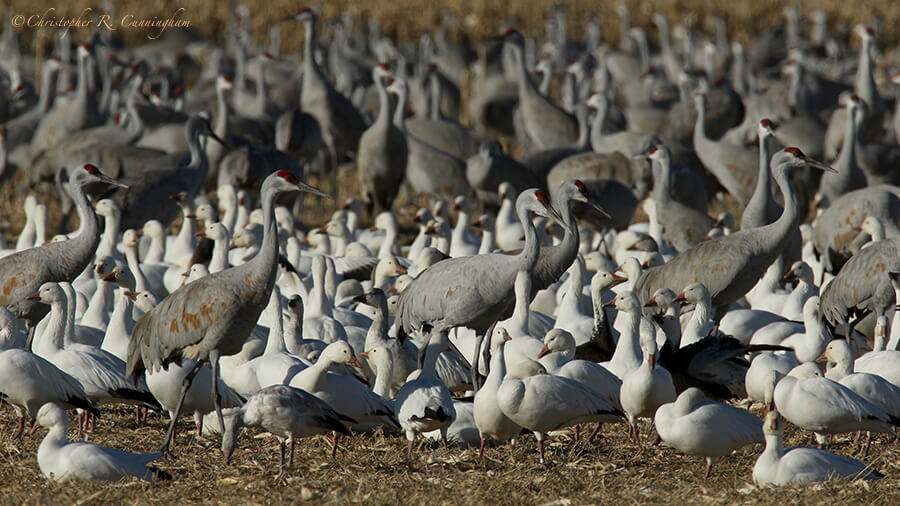Life is not a spectacle or a feast; it is a predicament.–George Santayana

Huge flocks of waterfowl are one of the great spectacles of the fall and winter. Lesser Snow Geese congregate in wetlands and agricultural fields like those in and around Anahuac National Wildlife Refuge, Texas. At Anahuac, thousands of birds can dot the land and water and form swirling clouds, but we’ve only seen them from a distance, deep in the marshes or fields. Truth be told, I assumed that all the white waterfowl we’ve seen here in the past were Lesser Snow Geese. This is probably not the case.
Last Winter, on a road trip to New Mexico, we were able to get close enough to similar flocks to identify a few of the much smaller Ross’s Geese that could easily pass unnoticed. Ross’s Geese are rare visitors to Texas and New Mexico and are far fewer in number than Snow Geese, with which they have been know to interbreed.
Ross’s Geese are small and cute, with relatively stubby beaks and round domed heads, like baby animals. As a naturalist, the first word that entered my mind when I saw Ross’s Geese was neoteny. Neotenic evolution occurs when juvenile features are retained in the adult . . . .

Ross’s Geese are Arctic breeders whose lives were poorly understood until the recent past. In the 1930’s, they were thought to only number several thousand individuals. Snow Geese were in a similar predicament a few decades earlier. In recent times, though, both species have greatly expanded their numbers and now make up sizable flocks.
The standard adaptationist explanation for herds or flocks or animals is that there is safety in numbers. The chance of any individual being taken by a predator is low. A logical extension of this strategy would be to be a rare species in a much larger group of another species. Any attack by a predator on the group would most likely result in a member of the more abundant species being taken.
Could the rarity of Ross’s Geese, coupled with looking like a juvenile (and hence receiving gentler treatment from the other geese?), be a survival strategy? Every trip to the field provides more questions than answers and ample fuel for speculation.

©2017 Christopher R. Cunningham. All rights reserved. No text or images may be duplicated or distributed without permission.